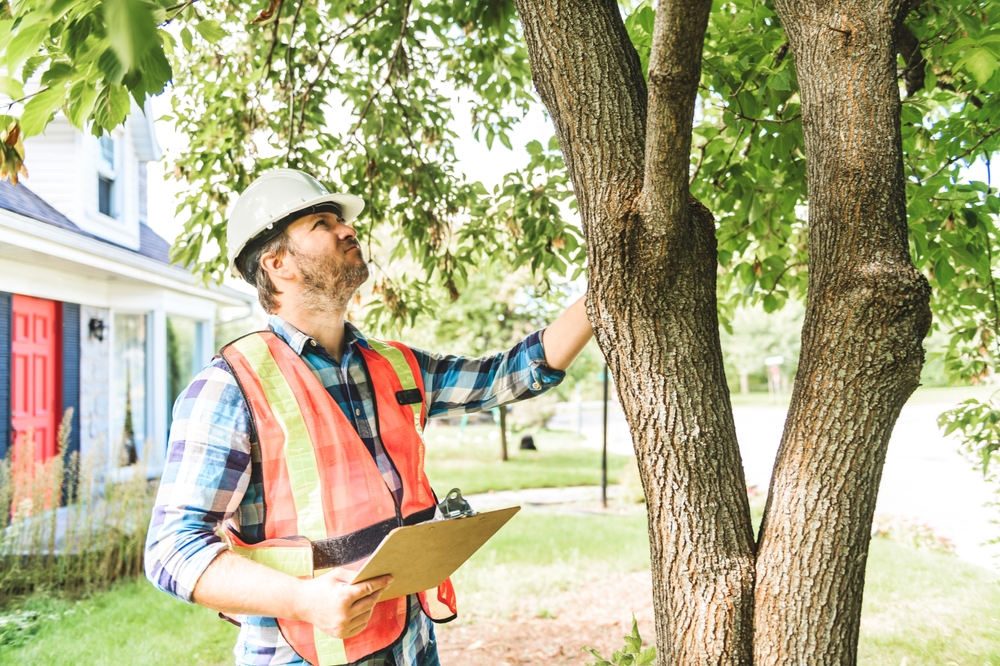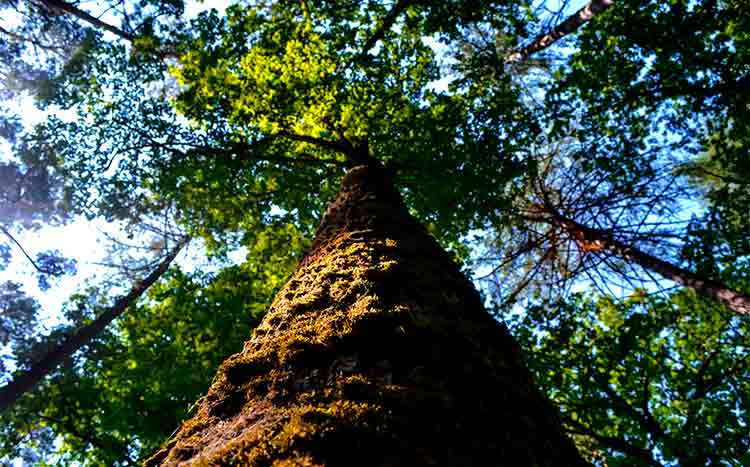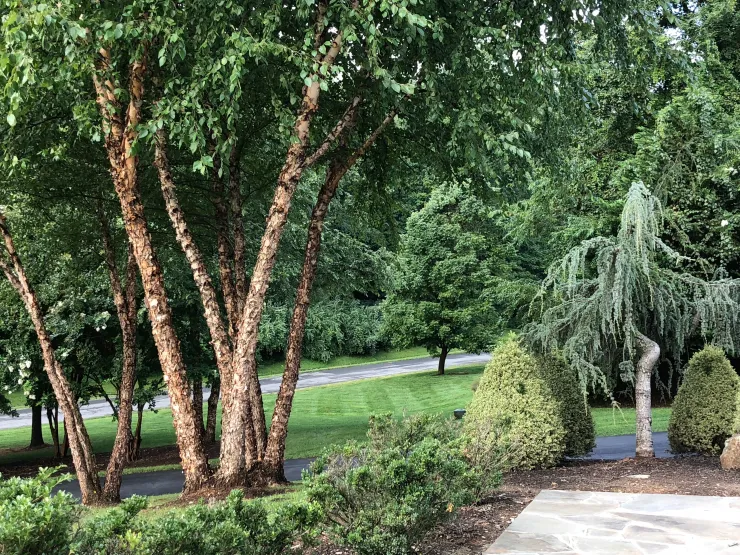Tree health assessments are crucial when maintaining a beautiful and safe outdoor environment. Regular tree services are essential in Las Vegas, NV, where the unique climate and environmental factors can impact the well-being of trees. Troy’s Tree service in Las Vegas offer expert arborist-led evaluations to ensure the health and safety of trees in residential and commercial properties. In this article, we will explore the significance of tree health assessments and how they contribute to the overall care and maintenance of trees in Las Vegas.
As a homeowner or business owner in Las Vegas, NV, you understand the importance of maintaining the beauty and health of your property. One crucial aspect of property maintenance is caring for the trees that adorn your landscape.
Trees enhance the aesthetic appeal of your surroundings and provide numerous environmental benefits. Regular tree health assessments ensure your trees remain healthy and safe. In this article, we will explore the significance of tree health assessments and how they contribute to Troy’s Tree Service in Las Vegas, NV.

Tree Health Assessments
Tree Health
Before delving into the significance of tree health assessments, it’s crucial to comprehend the concept of tree health itself. Tree health refers to the overall well-being and vitality of a tree. A healthy tree exhibits strong growth, vibrant foliage, and a sturdy structure. Conversely, an unhealthy tree may display signs of disease, decay, or structural instability. Assessing the health of your trees helps identify any underlying issues and ensures timely intervention. When it comes to tree services, assessments, are very important.
Assessing Tree Health: The Role of an Arborist
Professional arborists with the necessary expertise and knowledge best perform tree health assessments. An arborist is a trained specialist who understands the complexities of tree biology, diseases, and environmental factors that affect tree health. They employ their skills to evaluate the condition of trees, identify possible risks, and provide appropriate recommendations for tree care and maintenance.
Benefits of Regular Tree Health Assessments
Regular tree health assessments offer a multitude of benefits for both residential and commercial properties:
Enhanced Safety: Through thorough inspections, arborists can identify potential hazards such as weak branches, diseased limbs, or unstable trees. By addressing these risks promptly, tree health assessments contribute to the safety of your property, family, employees, and visitors.
Preserving Healthy Trees: Early detection of tree health problems allows for timely treatment, ensuring that diseased or infested trees receive the necessary care. By protecting the health of your trees, you can extend their lifespan and maintain a beautiful landscape.
Preventative Measures: Tree health evaluations assist in locating and resolving concerns before they become more serious ones. Frequent upkeep and observation may avert tree failure, lower the possibility of property damage, and spare you the expense of expensive emergency tree removal.
Environmental Benefits: Healthy trees contribute to a greener environment by purifying the air, providing shade, and creating habitats for wildlife. Regular tree health assessments ensure trees thrive and contribute to the local ecosystem.
The Process of Tree Health Assessment
Assessing the health of trees involves a systematic process that arborists follow to gather information and make informed recommendations. Let’s explore the critical steps involved in a tree health assessment:
Visual Inspection
Arborists begin by visually inspecting the tree, considering various factors such as its overall appearance, foliage condition, and structural integrity. They look for signs of decay, disease, insect infestation, or physical damage. The visual inspection provides valuable insights into the tree’s health and helps guide further assessment.
Evaluation Checklist for Tree Health Assessment
Arborists often utilize an evaluation checklist to ensure a comprehensive tree health assessment. The checklist may include factors such as:
- Tree structure and stability
- Root system evaluation
- Canopy assessment
- Signs of decay and disease
- Presence of pests or insect infestation
By systematically evaluating each criterion, arborists can gather detailed information about the tree’s condition and identify any issues that require attention.
Identifying Tree Health Problems
During the assessment, arborists pay close attention to signs of tree health problems. This may include dead or decaying branches, abnormal growth patterns, discoloration of foliage, or the formation of cavities. Identifying these problems helps determine the underlying causes and appropriate treatment measures.
Conducting a Tree Inventory
In some cases, conducting a tree inventory becomes essential, especially for more significant properties or commercial landscapes. A tree inventory involves documenting information about each tree, including species, age, size, and health condition. This inventory is valuable for ongoing tree management and helps prioritize maintenance efforts.
Key Factors Considered in Tree Health Assessments
During a tree health assessment, arborists consider several key factors to evaluate the tree’s overall condition. Let’s explore these factors in detail:
Tree Structure and Stability
Assessing the structure and stability of a tree is crucial for identifying potential risks. Arborists examine the tree trunk, branches, and overall form to determine signs of weakness, cracks, or co-dominant stems. By evaluating the tree’s structure, they can assess its ability to withstand strong winds, storms, or other external forces.
Root System Evaluation
The health of a tree’s root system is vital for its overall well-being. Arborists evaluate the root system by inspecting the root collar, checking for signs of girdling roots, and assessing soil compaction. Healthy roots provide essential nutrients and water to the tree, ensuring its vigor and stability.
Canopy Assessment
The canopy of a tree reflects its overall health and vitality. Arborists examine the foliage density, color, and presence of dead or dying branches. Canopy assessment helps identify potential issues such as nutrient deficiencies, pest infestations, or diseases affecting the tree’s well-being.
Signs of Decay and Disease
Detecting signs of decay and disease is essential to tree health assessments. Arborists look for fungal growth, discoloration, or wood-softening indicators. These signs can indicate the presence of pathogens or structural issues that require immediate attention.


Tree Health Assessment Techniques
Arborists employ various techniques and tools to perform accurate tree health assessments. Let’s explore some standard methods used:
Advanced Diagnostic Tools
Advancements in technology have facilitated the use of advanced diagnostic tools in tree health assessments. Tools such as seismographs, sonic tomography, or aerial drones aid in assessing the internal condition of the tree, detecting hidden decay, or evaluating structural integrity.
Soil Analysis
Soil analysis plays a significant role in understanding tree health. Arborists collect soil samples to assess nutrient levels, pH balance, and soil compaction. This analysis helps determine if corrective measures are required to improve the tree’s root health and overall vitality.
Aerial Inspections
Aerial inspections provide valuable insights for more giant trees or those in challenging environments. Arborists use specialized equipment and techniques to access the tree’s crown and visually inspect hard-to-reach areas. Aerial inspections are beneficial for assessing the health of trees in urban settings or near power lines.
Benefits of Early Detection and Prevention
Early detection and prevention are critical aspects of tree health assessments. Let’s explore the benefits of addressing tree health issues proactively:
Mitigating the Risk of Tree Failure
By identifying structural weaknesses or signs of potential failure, tree health assessments allow arborists to recommend suitable measures to mitigate risks. This may include pruning weak branches, installing support systems like cables or braces, or recommending tree removal to prevent accidents or property damage in severe cases.
Preserving Healthy Trees
Regular assessments help identify and address tree health problems promptly, allowing for preserving healthy trees. Arborists can ensure trees’ continued well-being and longevity by implementing appropriate treatments, such as pest control, disease management, or nutrient supplementation.
Cost Savings in the Long Run
Regular tree health assessments can result in significant cost savings over time. Early detection and preventive measures help avoid expensive emergency tree removal costs, property damage, and potential liabilities. By addressing tree health issues proactively, you can prevent the need for emergency services and costly repairs.
Additionally, preserving the health of your trees through regular assessments can save you money in the long run. Healthy trees require less maintenance and are less susceptible to diseases, pests, and structural issues. By investing in tree health assessments and appropriate care, you can avoid the need for extensive tree treatments or removal, which can be expensive.
Hiring a Professional Arborist for Tree Health Assessments
Qualified and experienced arborists should conduct tree health assessments. Here are some key considerations when hiring an arborist for your tree services:
Qualities of a Certified Arborist
Look for an arborist certified by a recognized professional organization, such as the International Society of Arboriculture (ISA). Certification ensures that the arborist has the necessary knowledge, skills, and experience to perform tree health assessments and provide expert recommendations.
When to Call an Arborist
It is advisable to schedule regular tree health assessments, especially for older or more significant trees. Additionally, you must call an arborist for a professional evaluation if you notice any signs of tree health problems, such as dead branches, leaf discoloration, or pest infestations.
Choosing the Right Tree Service Provider
Take into account a tree service provider’s reputation, background, and credentials. Verify their insurance coverage, check reviews, and ask for recommendations. Reputable tree care companies have the know-how to conduct thorough evaluations of your trees’ health and give suitable solutions for your tree care requirements.
Conclusion
Regular tree health assessments are vital to tree services in Las Vegas, NV. They help ensure your trees’ safety, beauty, and longevity, mitigate potential risks, and prevent costly damages. By hiring a professional arborist and investing in regular assessments, you can proactively manage the health of your trees and enjoy the many benefits they provide to your property and the environment
FAQs (Frequently Asked Questions)
Q: What is the cost of a tree health assessment?
A: The cost of a tree health assessment can vary depending on factors such as the number of trees, their size, and the complexity of the evaluation. It’s best to contact local tree service providers in Las Vegas, NV, to get accurate cost estimates for your specific needs.
Q: How often should I schedule a tree health assessment?
A: The frequency of tree health assessments depends on various factors, including the age, species, and condition of your trees. As a general guideline, it is recommended to schedule evaluations every 1-3 years for mature trees and annually for younger or newly planted trees. Contacting a certified arborist can help determine the optimal assessment schedule for your trees.
Q: Can I assess the health of my trees on my own?
A: While you can observe your trees for signs of apparent problems, conducting a thorough tree health assessment requires specialized knowledge and experience. It is best to hire a professional arborist who can accurately assess the health of your trees and provide appropriate recommendations.
Q: What are some common signs of an unhealthy tree?
A: Common signs of an unhealthy tree may include:
- Wilting, discoloration, or premature leaf drop
- Dead or decaying branches
- Damage to the trunk, such as cracks or cavities
- Fungal growth on the trunk or branches
- Insect infestations or the presence of pests
- Abnormal growth patterns or stunted growth
If you notice any of these signs, it’s advisable to consult with an arborist for a thorough assessment.
Q: Are tree health assessments essential for newly planted trees?
A: Yes, tree health assessments are beneficial for newly planted trees as well. Assessments help ensure the trees establish healthy root systems, receive adequate water and nutrients, and do not experience any stress or early problems. Regular assessments in the early stages of a tree’s life can help identify and address issues before they become more significant concerns.
